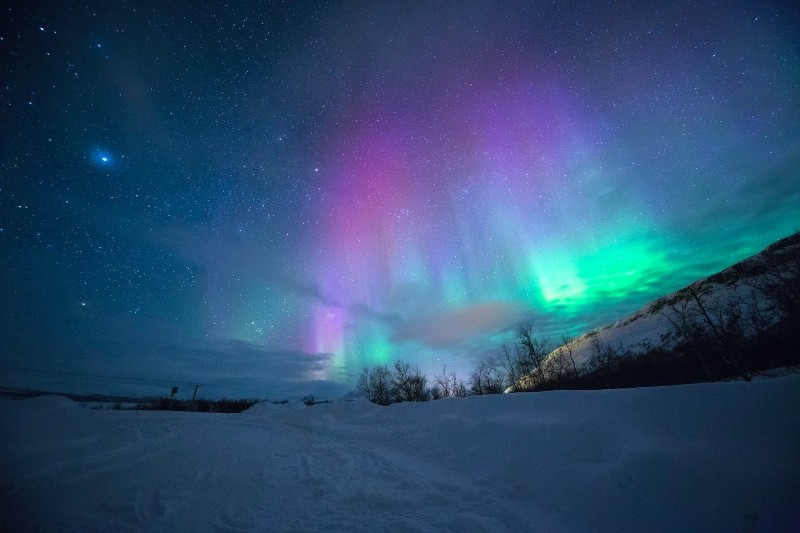
Multi-hued color Aurora at Tromso, Norway.
When the night sky transforms into a mesmerizing canvas of dancing lights, it is a natural spectacle that leaves all viewers in awe.
We are talking about the spectacular Northern Lights, the Aurora Borealis.
This winter, you have a golden opportunity to witness this night sky show, but there's more to it than just gazing skyward.
Our expert tips and must-see locations sourced all over the internet will guide you on an unforgettable journey into the heart of this cosmic marvel.
The Magic Behind the Northern Lights
Before we dive into the hows and wheres, let us understand what makes the Northern Lights shine.
Space.com explains that these ethereal lights are created by charged particles from the sun, known as solar wind, colliding with Earth's magnetic field.
These collisions excite gas molecules in our atmosphere, releasing photons of light and painting the night sky with vivid colors.
The type of gas molecules and the altitude of these collisions determine the colors you will see. Each aurora has a unique charm, from pale yellows and greens to rare reds and purples.
The Right Timing
Timing is crucial if you have been yearning to witness the Northern Lights.
Between October and March, winter offers the longest nights in Northern Europe, providing ample darkness for aurora spotting.
Travel sites tell us that in the northernmost regions, such as Norway, Sweden, Finland, and Iceland, the sun may not rise around the winter solstice, creating an enchanting environment for the lights to shine.
Read Also: Exploring Beyond Earth: AI-Powered Method Unveiled for Detecting Life Beyond Earth
Where to Chase the Aurora
Now, let us get to the exciting part of choosing your destination. Head north, near or above the Arctic Circle, for the best chance of catching the Northern Lights in all their glory. Here are some top picks from Nordic Visitor and Space.com:
Iceland: Basing yourself in Akureyri, the capital of the north, provides extended hours of darkness and a wider window to see the auroras.
Iceland offers spectacular lights, whale watching, and relaxing hot springs.
Northern Norway: Kirkenes, Tromsø, and the Lofoten archipelago offer prime aurora viewing locations. Combine your adventure with experiences like fjord exploration and encounters with the indigenous Sami people.
Swedish Lapland: Base yourself in Kiruna, near the Norwegian border, and explore the Ice Hotel. Alternatively, take a chairlift to the Aurora Sky Station in Abisko National Park for unbeatable views.
Escape Light Pollution
To truly enjoy the Northern Lights, you need to escape light pollution.
Cities and towns can drown out the brilliance of the auroras, so consider heading to the wilderness or countryside.
Guided tours are a great way to explore the wilderness while keeping an eye on the sky.
Some websites and organizations track the sun and can provide a forecast for the next day or week.
For example, the National Oceanic and Atmospheric Administration website in the United States gives data for the previous three days as well as 30-minute projections of solar activity.
Stay posted here at Tech Times.
Related Article: Last Supermoon 2023: How to See the Full Harvest Moon Appearing This Week









